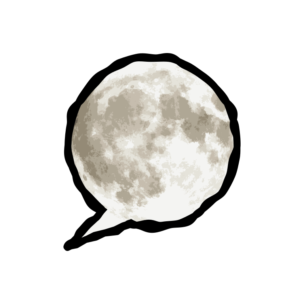
To be sure, there will be settlers on the Moon with Tory hearts, i.e. unwilling to give up the ways of Old Earth, however inappropriate to the new world. Earth’s calendar is one such piece of baggage best left at home. On Earth, counting time by moons may be convenient for nomads and rustic hunter-gatherers, but the overriding temporal fact of life since the dawn of the agricultural age remains the length of the year: the four seasons. But on the Moon, however, the four seasons do not apply — except for astronomers — and the overarching pacer of life will the the sunth ( see M is for Month, MMM #7 ). Since the slow rhythm of sunrise and sunset cannot be ignored on the Moon, the calendar should be organized around it, no ifs, ands, or buts.
Because of Earth’s proximity and the high density and intensity of Earth-Moon communications and commerce ( as compared, for example, to Earth-Mars intercourse ), it will be convenient to keep the standard 24 hour day — probably called date on the Moon to avoid confusion with the longer sunth. A simple calendar of alternating 29 and 30 date sunths will do the trick, especially if every fortieth date ( or on the closest weekend thereto ) an extra hour is added ( as we do in the fall switching from daylight-savings to standard time ) to make the sunth average 29.5 dates exactly. Then a two page calendar would always be valid even as to the times of local sunrise and sunset to within the hour, per location.
This system would be enhanced greatly if the sunth were four weeks exactly, which would require adding an eighth day three weeks out of eight. Such an extra day would be a logical choice for religious feasts and holy days and for secular holidays alike. Since the extra day would not be a working day but an off day providing three long weekends out of every eight, it should be a popular feature and add cultural color to life on the Moon. This way sunrise and sunset would occur, for a particular place, not only on the same dates of the sunth but also on the same days of the week which will be important for business and industry ( see article: POWERCO in this issue )
Since, obviously, such lunar weeks and weekdays would not line up or keep cadence with those of Earth ( no need to ), new names are in order. The reader may have some suggestions. Let me offer three possibilities:
A) named after the major moons or satellites of the solar system: Luna, Io, Europa, Ganymede, Callisto, Titan, Triton ( and 8th Titania )
B) named after the stars in the Big Dipper or Plough which can be seen on the Moon anywhere north of 30 degrees South: Dubhe, Merak, Phad, Megrez, Alioth, Mizar, Alkaid ( and 8th, Alcor )
C) named after the stars of the Pleiades which can be seen from anywhere on the Moon: Alcyone, Merope, Electra, Celaeno, Taygeta, Asterope, Maia ( and 8th, Pleione and / or Atlas, the parents of the famous seven sisters ).
For fiscal convenience, the calendar should have twelve sunths invariably — like the Islamic model rather than the Jewish one ( which sometimes has thirteen ). This short “year” or ennium of the 354 dates would slip seven sunths out of alignment with Earth’s calendar after nineteen years ( see M is for Metonic Period in MMM #7. ) So every nineteenth year an extra seven sunth period could be added, to be called the renaissance and devoted to constitutional and institutional renewal, reform, and rededication, thus bringing the Moon’s calendar back into step with Earth’s and providing a predictably popular generational rhythm as a fringe benefit lunar civilization could be proud of.
There are alternatives of course, but why compromise with those inappropriately attached to terrestrial customs. It’s a brand new world and why not start fresh with new traditions? Tories can always import Earth calendars and keep them under their pillows. [This issue will be revisited.]